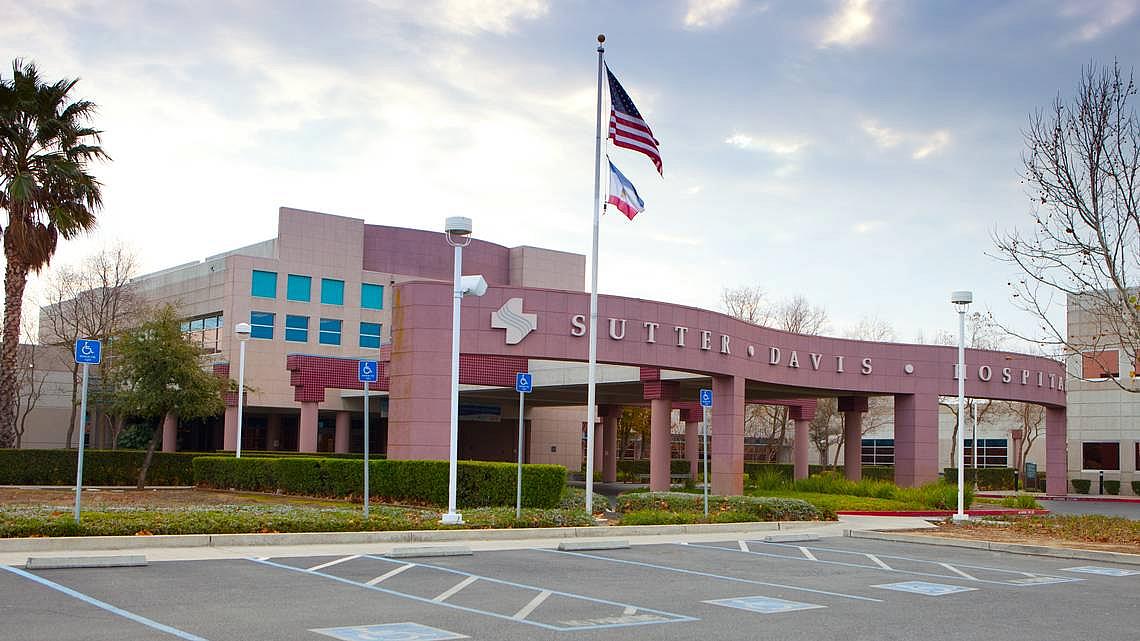Some hospitals ban vaginal birth after cesarean. This California obstetrician rebelled and won
This project was originally published in The Sacramento Bee with support from our 2023 California Health Equity Fellowship.

After extensive negotiations, the hospital lifted the ban on vaginal birth after C-sections in 2014.
Courtesy of Sutter Health
Annette Fineberg realized the policy was bull.
The obstetrician’s patient — who was overweight, in active labor, delivering a premature and thus small baby — had previously undergone a C-section, sure. But the woman had given birth vaginally two times after that surgery, and, again, she was very much in labor. A repeat C-section, Fineberg thought, would be a bigger risk to the woman’s health than a vaginal birth.
A cesarean is a significant surgery and can put the person giving birth in danger. A vaginal birth after cesarean, or VBAC, raises other concerns, but each C-section further increases the probability of bad birth outcomes.
So the doctor did something she hadn’t done in more than five years of working at Sutter Davis Hospital: She ignored the facility’s ban on vaginal birth after cesareans, and she oversaw the care of her patient as the mother delivered vaginally.
In the end, Fineberg had a healthy mom, a healthy baby and a stern letter from the hospital admonishing her for violating the policy.
She resolved to get that policy changed, and in the process, she and her colleagues made Sutter Davis a model for community hospitals across California.
HOW DID SUTTER DAVIS UNDO ITS VBAC BAN?
After extensive negotiations, the hospital lifted the ban on vaginal birth after C-sections in 2014. In nearly a decade since, people seeking care there have had better options and healthier birth outcomes, said Fineberg, who no longer works at the hospital.
The ban wasn’t created on a whim. Leaders at the hospital had faced what appeared to be a dilemma when the American College of Obstetricians and Gynecologists put out a practice bulletin in 1999 saying that if patients in a hospital were attempting vaginal births after C-sections, then that hospital should have everything needed for an emergency surgery, including an anesthesiologist, immediately available.
Like many smaller hospitals, Sutter Davis does not have an anesthesiologist physically present at the hospital 24/7. So, in response to the guidelines, they compelled pregnant women into sometimes unnecessary surgeries.
A first birth with a single fetus that is head-down and at or beyond 37 weeks is considered a low-risk birth. Despite the lower risk, the C-section rate for those births in California is still much higher than the 10 to 15% recommended by the World Health Organization, suggesting many of those first C-sections weren’t really medically needed in the first place.
And these people are in a bind, too: Once they have a first C-section — even if it wasn’t really necessary — the odds of having another major surgery if they have more children jump. National Center for Health Statistics data analyzed by the March of Dimes Perinatal Data Center show that between 2017 and 2021, the average VBAC rate across all California counties was just under 12%, meaning that the vast majority of births after a C-section are more C-sections.
Those numbers are partially related to a genuine health risk: Once a person has had a C-section, the chance of a uterine rupture increases to less than 1% during a subsequent standard labor. A uterine rupture is a medical emergency that requires surgery, hence ACOG’s guideline that surgery needs to be accessible “immediately.”
But ACOG’s provision also appears to leave small hospitals which don’t have 24/7 anesthesia coverage with a grim choice: Flout the American College of Obstetricians and Gynecologists, or tell women that once they’ve had a C-section, they must have another scheduled surgery in that facility, no matter what.
Even the existence of such a ban discouraged women who were good candidates for a trial of labor after C-section from seeking care elsewhere, Fineberg said.
“Just the fact that they had to go somewhere else, like, ‘Oh, it must be risky, I better not do that, I should have my scheduled C-section,’” she said. “That’s a fine decision for an individual to make if they want to make that decision. But on a population,” those choices just led to significantly more surgeries.
After a few years working under the ban, Fineberg said, “Everybody was realizing, we’re really doing the wrong thing for patients.” And then, once she got in the tiff with the administration over defying the policy, she got to work.
Fineberg was able to rally people to her cause, partly as a point of professional pride.
“All the VBACs in our county had been done at home,” she said. “Here we are, supposedly a hospital, and we can’t do it, and yet every home birth midwife is doing it. It’s like, hello, people? Are we supposedly the experts in maternal care?”
The shift took several years of negotiations, but in the end, medical staff obstetricians, pediatricians, anesthesiologists and hospital administrators came to an agreement, a representative for Sutter Davis confirmed. They settled on a pricey strategy, but one that they believed was safer for patients and for their own liability concerns: They would accept good candidates for VBAC, and whenever one of them came to the hospital in labor, the anesthesiologist on-call would just come in and wait around in case something bad happened.
There were a few isolated uterine ruptures, Fineberg said. But overall, the new policy was a huge success.
In 2022 and 2023, the hospital won awards from the California Maternal Quality Care Collaborative for its relatively low rate of C-sections for low-risk births; Cal Hospital Compare rates Sutter Davis “superior” on several maternity metrics.

